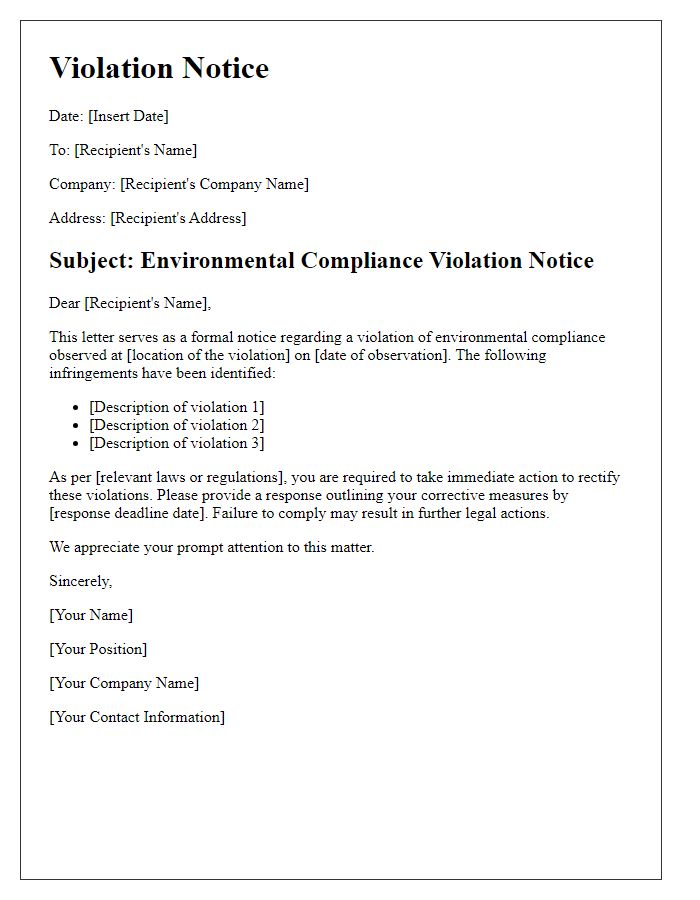In today's world, environmental compliance isn't just a legal obligation; it's a shared responsibility that affects us all. Understanding the intricacies of environmental regulations can seem overwhelming, but it plays a crucial role in protecting our planet and promoting sustainable practices. Whether you're a business leader, an employee, or a concerned citizen, staying informed about compliance can empower you to make meaningful changes. So, join me as we delve deeper into the essential elements of environmental compliance and discover how you can contribute to a greener future.

Regulatory Requirements
Environmental compliance communication involves adhering to various regulatory requirements, defined by authorities like the Environmental Protection Agency (EPA) in the United States. These regulations, established under the Clean Air Act, Clean Water Act, and Resource Conservation and Recovery Act, mandate organizations to monitor emissions, waste disposal, and resource usage. Non-compliance can result in significant penalties, including fines that can reach up to $50,000 per day, depending on the severity of the violation. Regular auditing processes, such as the use of Environmental Management Systems (EMS), can help in maintaining compliance. The importance of maintaining a comprehensive documentation trail ensures that all regulatory obligations are met and can be verified during inspections. Implementing best practices such as employee training on environmental policies also plays a crucial role in fostering compliance within organizations.
Environmental Impact Assessments
Environmental Impact Assessments (EIAs) are essential tools for evaluating the potential impacts of proposed projects on the natural environment. Conducted for various developments, such as the construction of infrastructure (bridges, highways), industrial facilities (factories, power plants), or land-use changes (agricultural expansion), these assessments provide vital insights into ecological balance. In 2020, over 4,000 EIAs were submitted in the United States, highlighting the importance of regulatory processes for safeguarding biodiversity. The assessment process typically includes public consultations, baseline studies on flora and fauna, and mitigation strategies to minimize adverse effects. Key environmental factors analyzed often include air quality, water resources, soil health, and community well-being, ensuring that all potential risks are understood before project initiation.
Compliance Deadlines
Businesses must adhere to environmental compliance regulations to avoid penalties. Compliance deadlines vary based on legislation, such as the Clean Air Act or the Resource Conservation and Recovery Act. Specific dates require businesses to submit reports, undergo inspections, or implement necessary changes. For instance, a facility may need to complete its waste management plan by March 31, while air quality permits might have deadlines on June 1. Strict adherence to these timelines is crucial to maintain operational licenses and to ensure sustainable practices are upheld. Non-compliance may result in significant financial penalties, damage to reputation, and even legal actions. Regularly updating and training staff on compliance schedules is essential for avoiding lapses.
Reporting Procedures
Environmental compliance reporting procedures ensure adherence to regulations governing pollution limits, waste management, and resource conservation. Organizations must establish a framework detailing methods for documenting non-compliance events like emissions exceeding legal thresholds or hazardous waste spills. Key elements include timelines for incident reporting (typically within 24 hours), responsible personnel, and necessary documentation such as incident logs, corrective action plans, and communication with regulatory bodies like the Environmental Protection Agency (EPA). Regular audits (at least quarterly) maintain accountability and enhance transparency in compliance practices, contributing to sustainable environmental stewardship while minimizing potential regulatory penalties.
Contact Information and Resources
Contacting the Environmental Protection Agency (EPA) is crucial for understanding compliance regulations related to hazardous waste management in the United States. Resources such as the Comprehensive Environmental Response, Compensation, and Liability Act (CERCLA) provide guidelines for emergency response and site cleanup, while the Resource Conservation and Recovery Act (RCRA) outlines standards for waste management. Local environmental agencies, like the California Department of Toxic Substances Control (DTSC), offer state-specific information and support for businesses seeking guidance in sustainability practices and pollution prevention initiatives. Engaging with these organizations enhances knowledge of best practices, ensuring adherence to environmental standards and promoting community well-being.













Comments